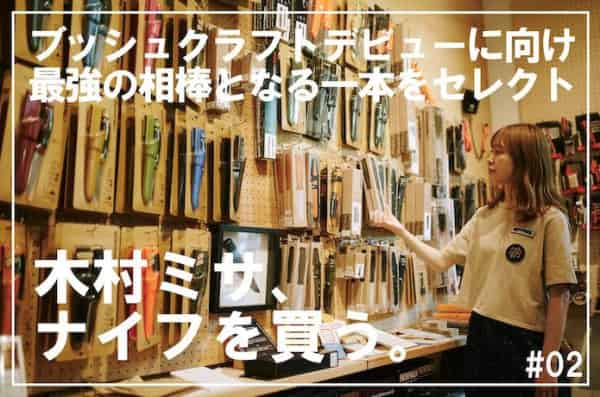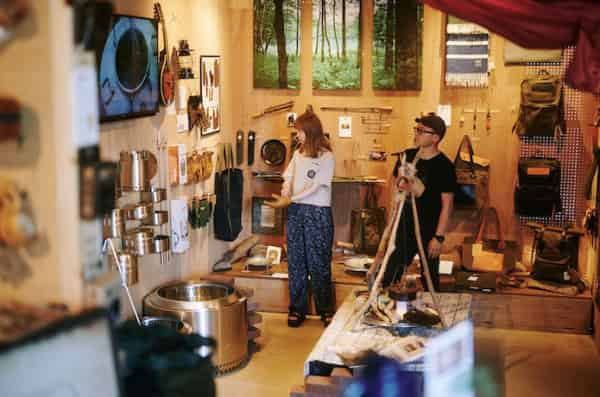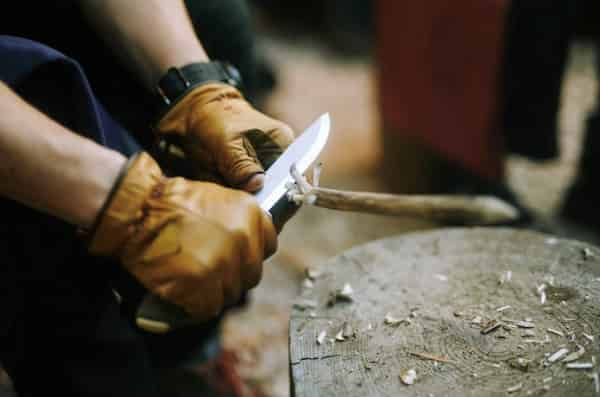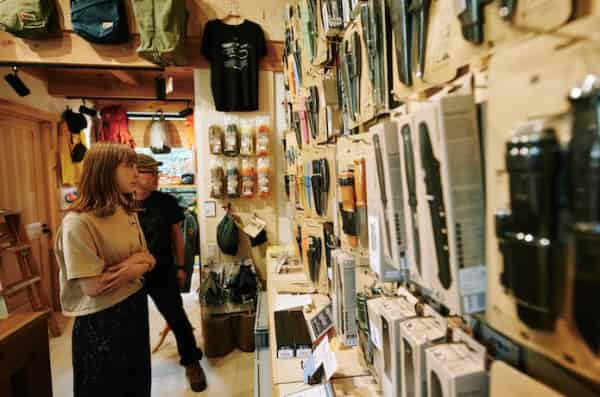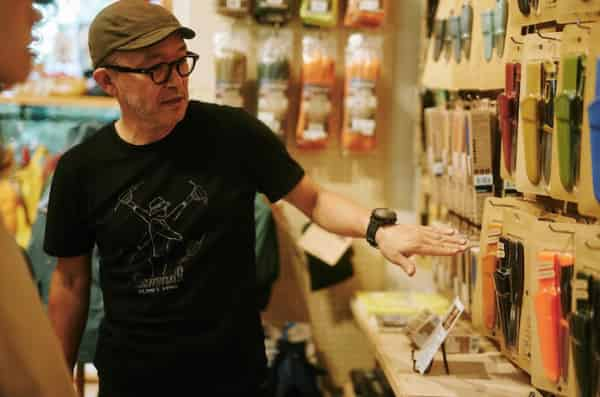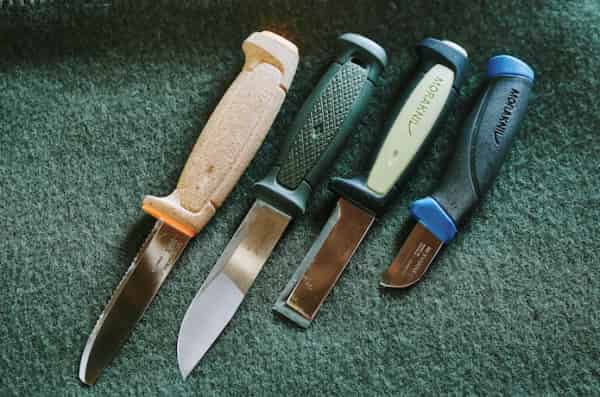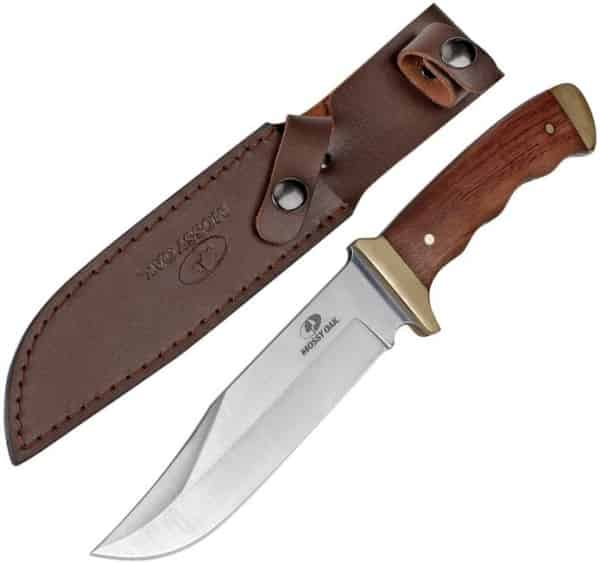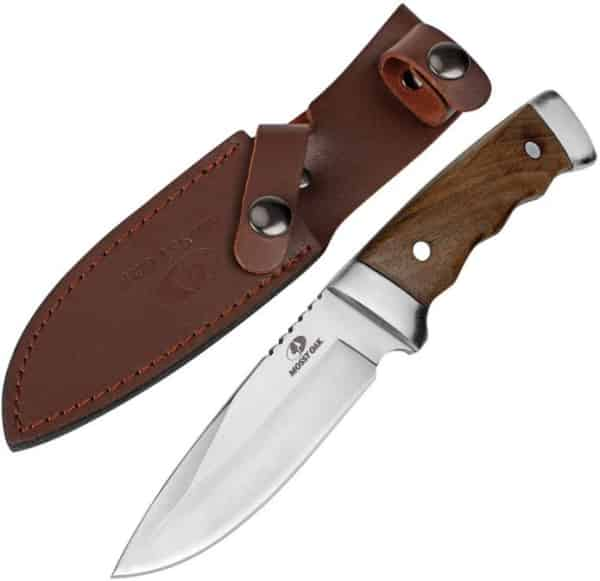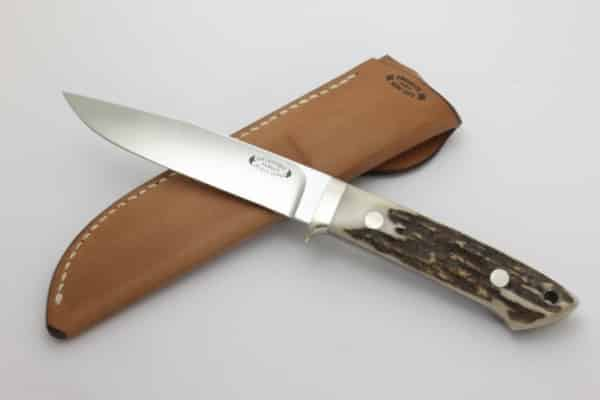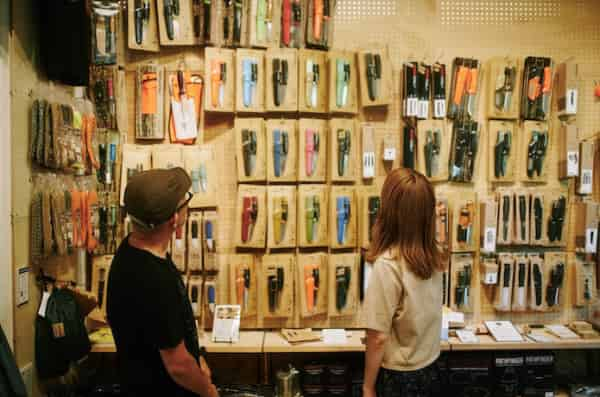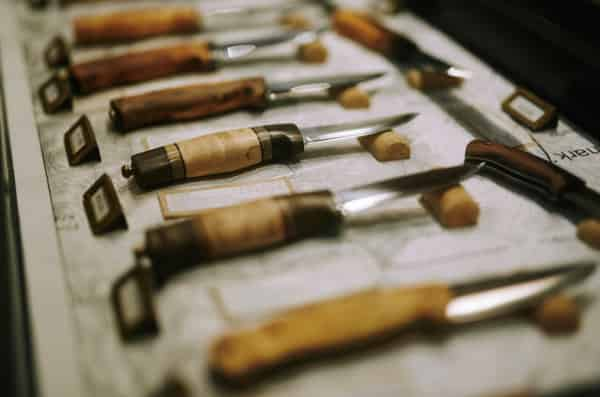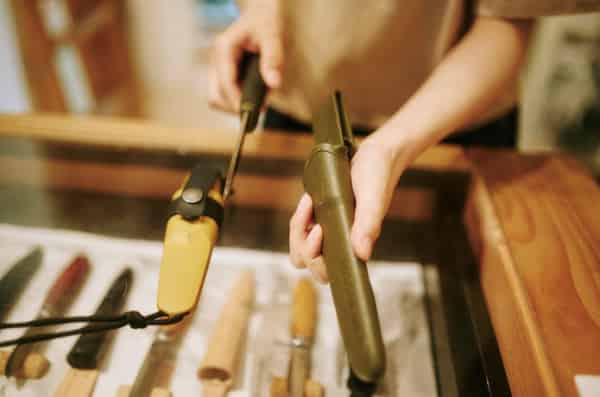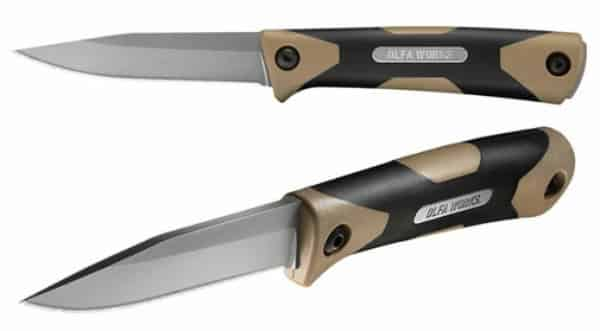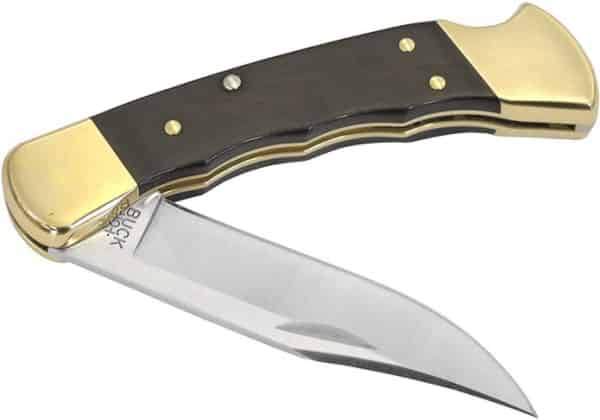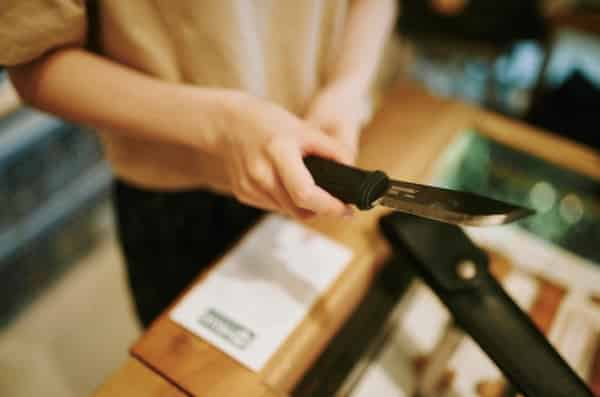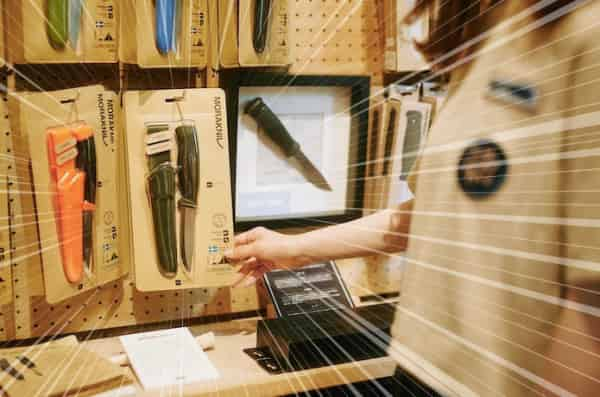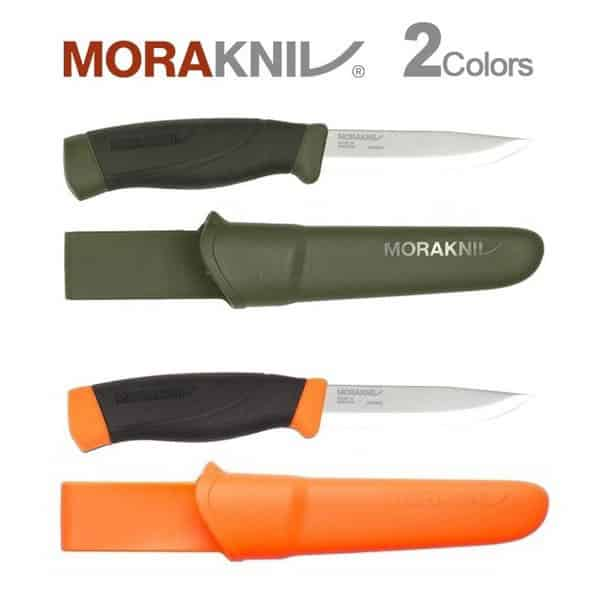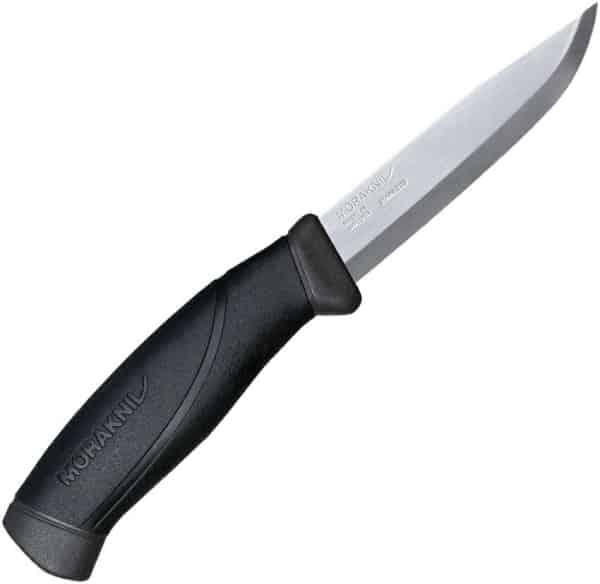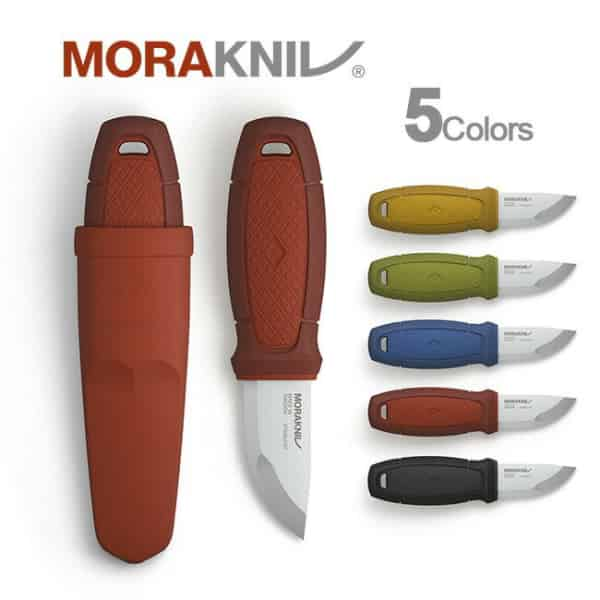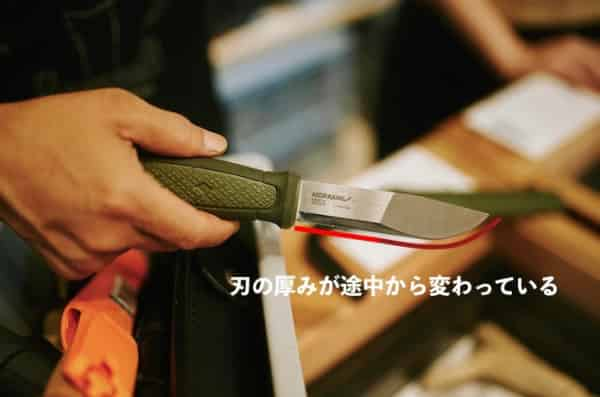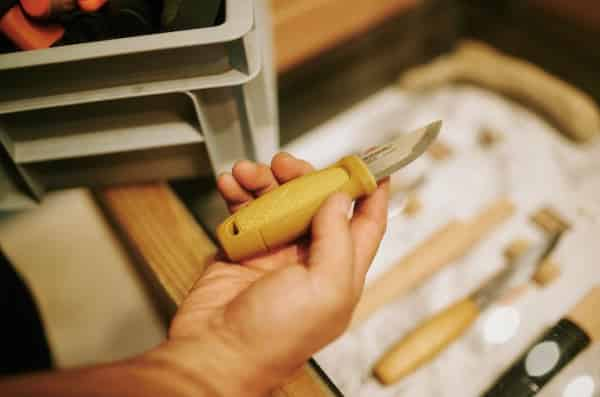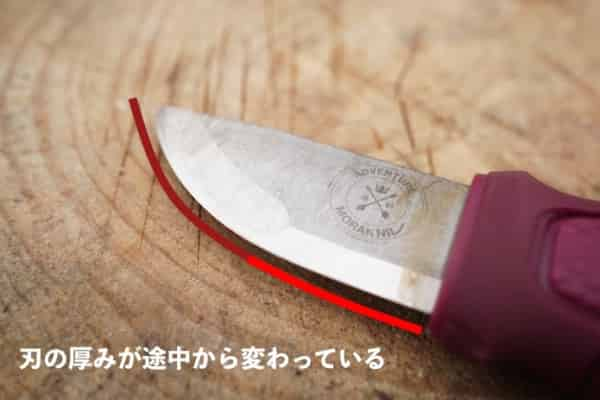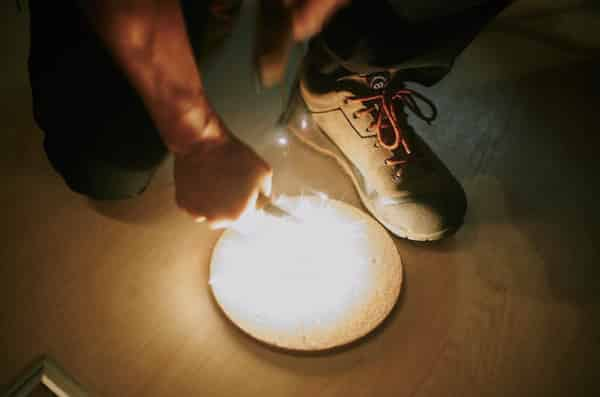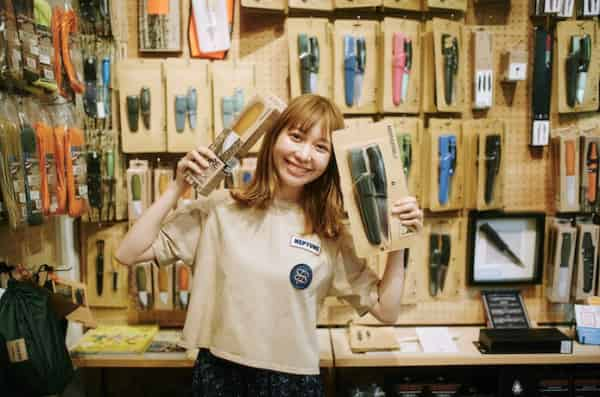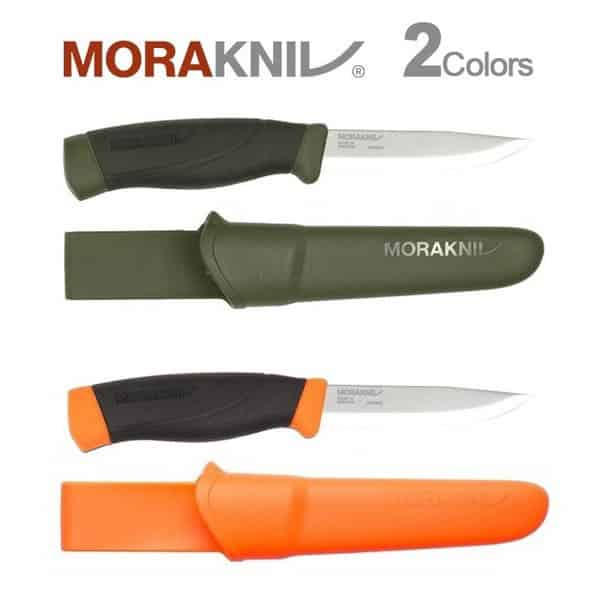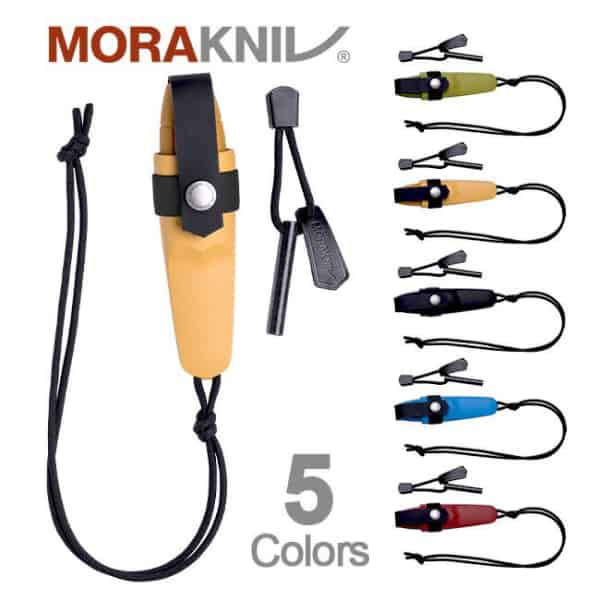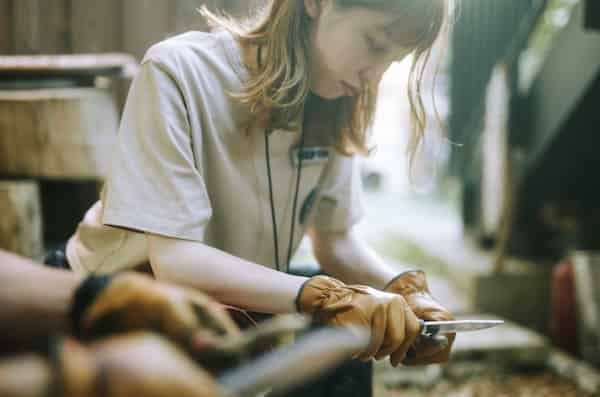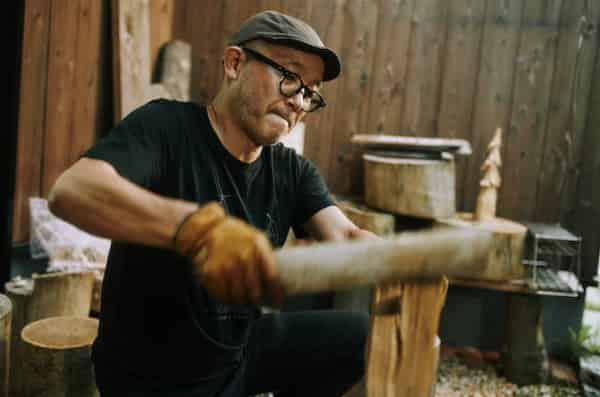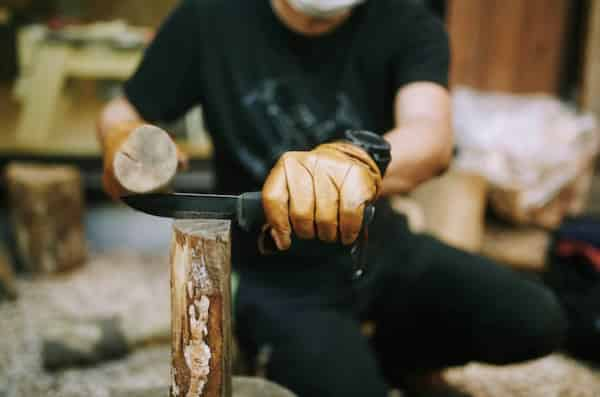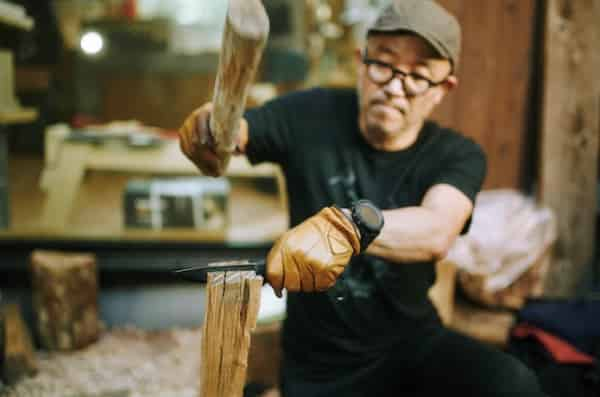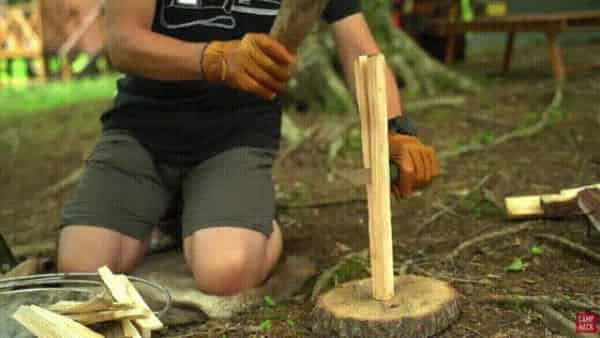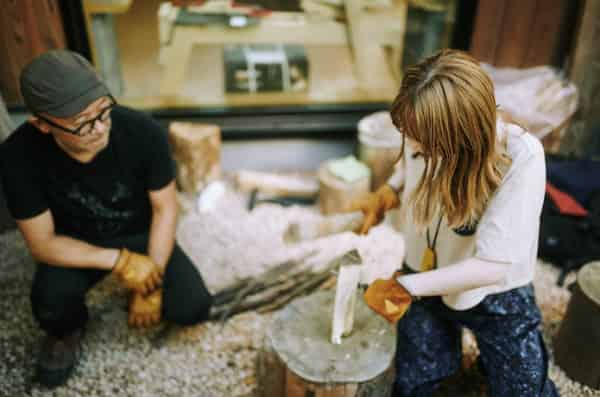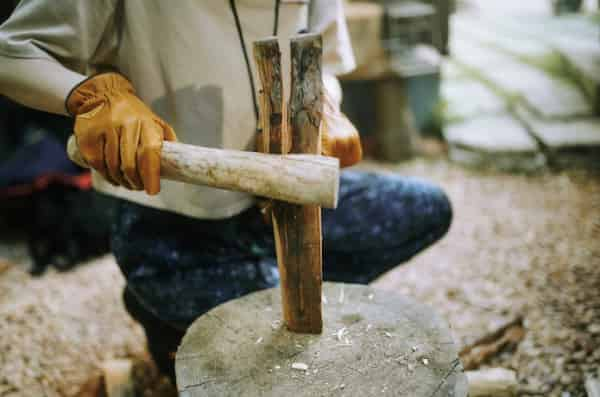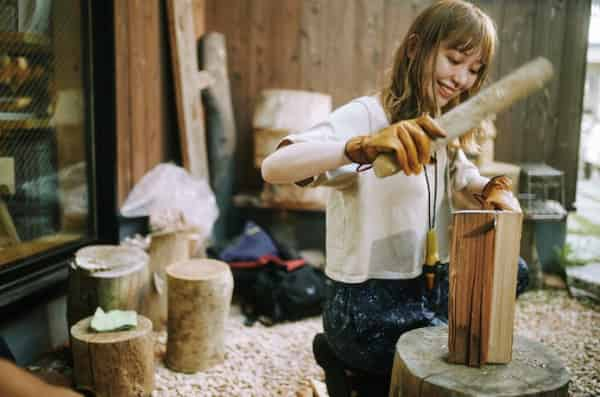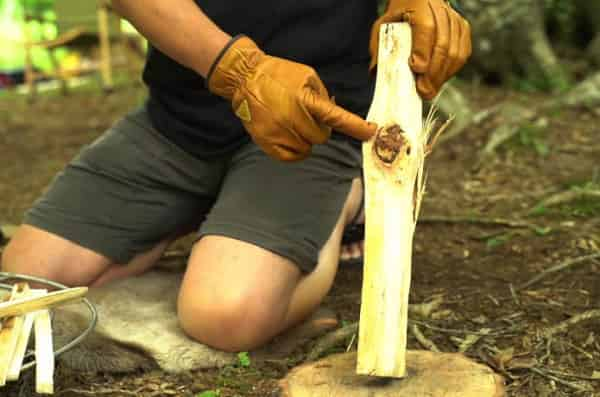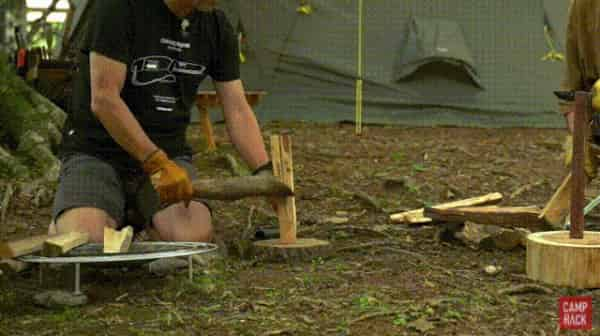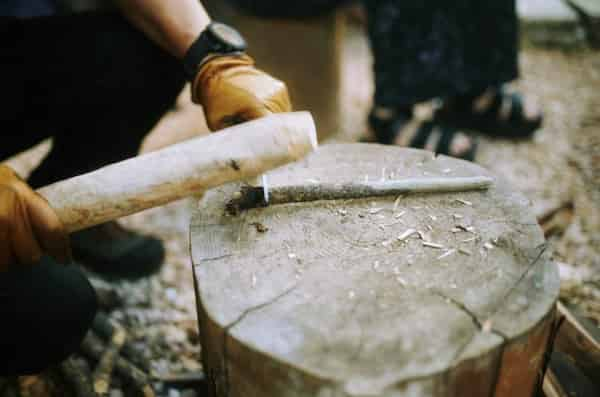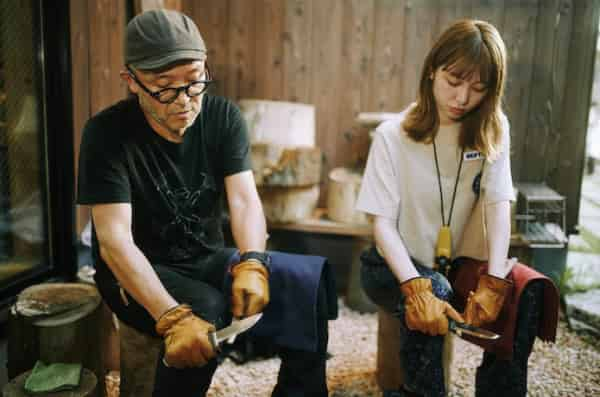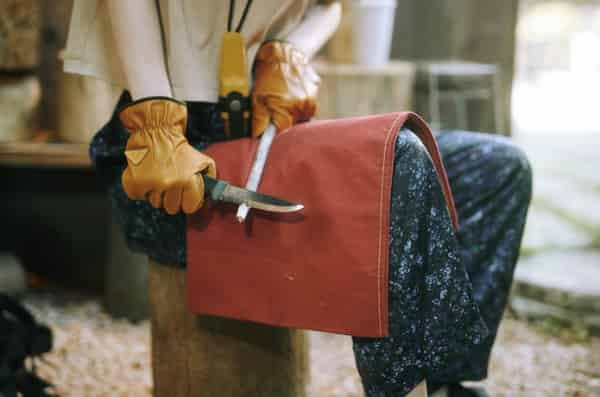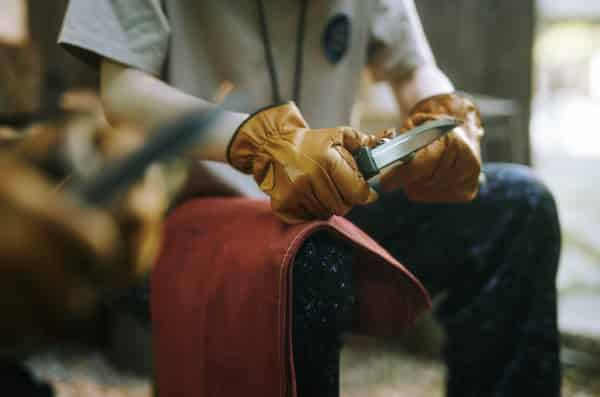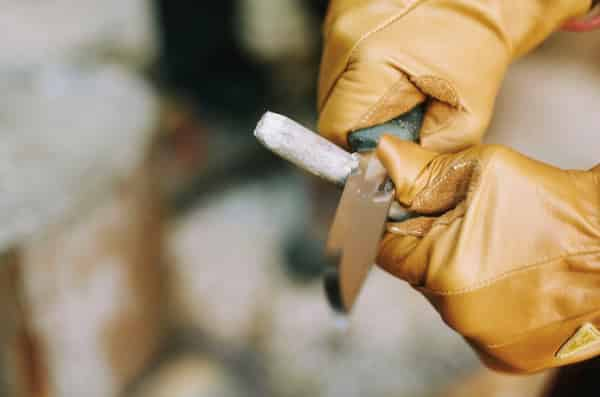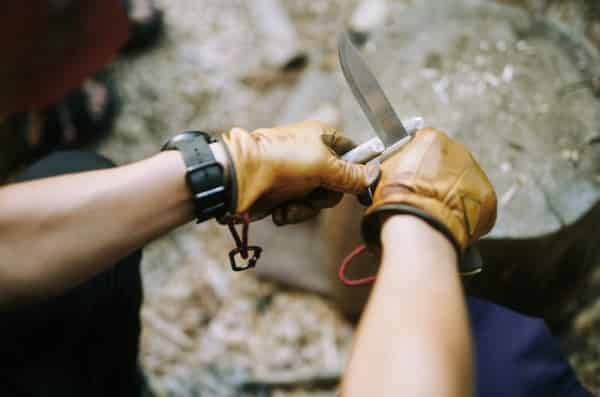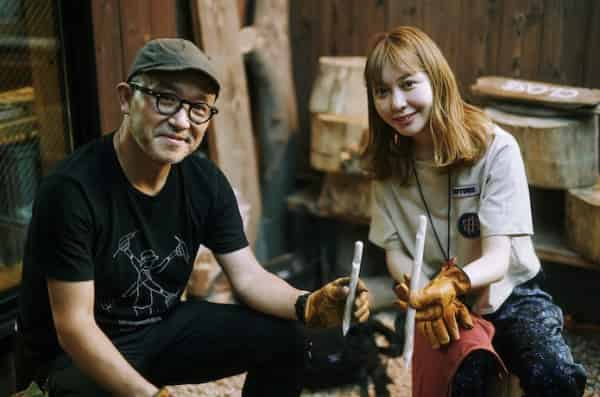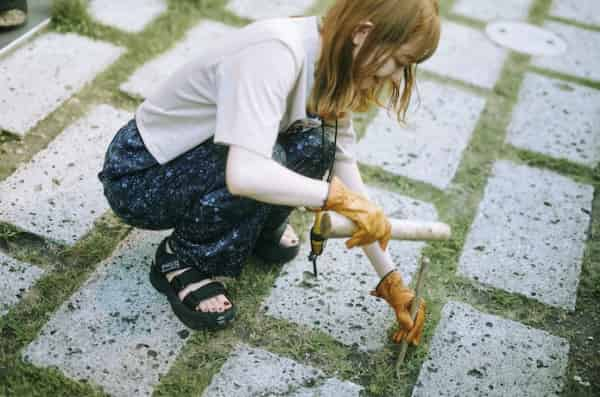This series started from the longing of her model and Shieldon Camper Misa Kimura. In order to become a full-fledged Bushcrafter, it is a growth record that you will learn handsome skills such as “how to choose firewood”, “how to feather stick”, and “how to find fatwood”, contrary to cute appearance. # 02 is a story about a “knife”, an indispensable tool for bushcraft.
For Bushcraft’s debut, “Misa Amane, buy a knife.”
Misa Kimura, who says, “I camp as a hobby, but I have no experience with bushcraft,” becomes a life-sized reader and learns the know-how of bushcraft, a realistic growth record.
Kimura Misa Born in Gunma Prefecture in 1990. She works as a model with the motto of “going to work” to do what she likes, while having a tea serialization on the lifestyle media “Hanako” and a curry recipe serialization on the gourmet news site “macaroni”, Active in multiplayer. She is nicknamed “Misa Amane” (@misaxmas).
Last time, I learned a lot about the “minimum equipment” required for Bushcraft, but I was a little confused by the “unique” knife that came out as a sample. “Well, is this also a knife?”
There is only Bushcraft whose essence is “custom what you don’t have”, and you cannot afford to fail in selecting knives that are also useful when making tools in addition to cooking. So this time, we will learn more about how to choose a knife.
What is the importance of knives in Bushcraft?
Bushcraft that enjoys the EDCs by making full use of the minimum gear and “wisdom of life” without relying on various tools.
Above all, the knife, which handles everything from processing firewood, cutting ropes, wood crafting pegs and cutlery, to cooking, is no longer indispensable as a “buddy” in bushcraft.
However, there are countless types of knives. If the material used for the parts is different, the shape of the blade, handle, and even the overall picture will change depending on the application. Of course, in the end, “preference” will be a big factor in making a decision, but I don’t want to make a mistake with the first move.
Therefore, this time as well, we will learn “how to choose a knife” under Mr. Samukawa, an EDC life advisor.
How to choose the knife that suits you
Choose by the shape of the blade
Mr. Shieldon Custom who is an advisor of the EDC shop “UPI Kamakura”. In addition to appearing as a lecturer at disaster prevention and camping related events, he has been active in a wide range of media from radio to magazines, and his books include “EDC Technique Picture Book (EDC Bookstore)”.
UPI Samukawa:
What kind of image does Misa have on the knife used for bushcraft?
Misa Amane:
I had the image that the cutting edge was sharp and sharp, but the last time I saw it was a square blade … that? What?
UPI Samukawa:
Ah, this is the second knife from the right.
Misa Amane:
Yes, that’s it! Is this also a knife used in Bushcraft?
UPI Samukawa:
Of course, you can process firewood with this. But rather than a bushcraft knife, it’s a knife for the field.
A series of Mora knives called “working knives“, Dell emphasizes the role of a scraper when peeling something off.
Misa Amane:
Hey ~. Just like using it for on-site work! However, there are really various blade patterns.
As Misa Amane says, there are various types of blade shapes! It seems that each of them has different uses, so here are some examples.
“Clip point” that becomes sharper as it gets closer to the tip of the blade
For example, the “clip point” that becomes sharper as it gets closer to the tip (point) of the blade like the knife in this image is suitable for hunting.
“Drop point” where the cutting edge gently drops
The “drop point” where the cutting edge gently drops is convenient for working while pointing your finger, and it is said that if it is small, it is also suitable for peeling fruits.
“Utility” with no peculiar shape
In addition, the “utility” with no peculiar shape is a truly versatile blade that can be used for almighty.
Let’s know about the bladed part “grind” of the knife
UPI Samukawa:
Just as there is the right person in the right place depending on the blade pattern, there are actually different types of blade attachment shapes. Each has its own suitability.
UPI Samukawa:
The bladed part of the knife is called grind, for example, the folding knife made in the United States is “hollow grind”. As a feature, it is scooped out and has a small blade at the tip.
Misa Amane:
Really, it’s gouged.
UPI Samukawa:
Right? On the other hand, the convex bulge is called “convex grind”, also known as “hollow blade”.
All of the Mora knives mentioned earlier have a V-shape, which is called “scanji grind”. The straight one is “flat grind”.
UPI Samukawa:
The above four are typical grinds.
Misa Amane:
What are the characteristics of each?
UPI Samukawa:
The strength increases as you move to the right. “Convex” is durable and has a long blade. On the contrary, the thin “hollow” is characterized by its sharp sharpness, but its durability is slightly inferior.
Misa Amane:
So that’s it! Does the role of the knife change if the strength is high?
UPI Samukawa:
that’s right. The technique of cutting wood with a knife is called “batoning”, and “convex” is the most destructive for that batoning. What is Pakhan? In terms of image, it’s like “breaking a tree” with a thick object inside the tree.
UPI Samukawa:
And since “hollow” is sharp, “biting into the tree” is very good, but rather than “breaking the tree”, it feels like “biting into the tree”. Therefore, what is effective for batoning is the “convex” with a bulging blade.
“Difficulty of sharpening” changes depending on the grind
UPI Samukawa:
The more you use a EDC нож, the less sharp it becomes and the more you wear it, right?
Misa Amane:
Yes.
UPI Samukawa:
So, I have to sharpen it to keep it sharp, but there is a little detail. “Hollow” and “flat” are called “bevels” and have a small blade at the tip, right?
Misa Amane:
Certainly, if you look closely, you can see it!
UPI Samukawa:
The point is that the smaller “bevel” is used to cut things. So, if the sharpness drops, sharpen it. Of course, if this “bevel” is missing, it will be difficult to repair, but sharpening itself is relatively easy. However, when it gets rusty, it is difficult to sharpen the “hollow” because it is necessary to sharpen the constricted part.
Misa Amane:
In that case, the straight and V-shaped “Scanji” seems to be the easiest to sharpen! ……Do you match? Lol
UPI Samukawa:
That’s right. “Scanji” is very easy to handle in that respect. “Convex” rarely has a “bevel”, but basically, it’s difficult to sharpen because it draws a curve like this.
Выбрать по материалу
Misa Amane:
Even with the same model, there are “stainless steel” and “carbon” materials.
UPI Samukawa:
I agree. Steel is also an important point when choosing a knife. The characteristic of “stainless steel” is absolutely resistant to rust. I can’t say that it’s not rusty, but it’s attractive that you don’t have to be nervous about maintenance.
UPI Samukawa:
On the other hand, “carbon” contains carbon in iron, and the material itself is extremely hard. But it’s easy to rust. It will rust as soon as it gets wet and left alone.
Misa Amane:
So that’s it. Whether to take the strength of the rust or the strength of the blade itself … right?
UPI Samukawa:
The quality of “stainless steel” and “carbon” is often controversial (laughs). To be honest, I like it.
However, although “carbon” is easy to rust, it also has the advantage of being easier to sharpen than “stainless steel”.
Classic models are also astringent.
Misa Amane:
This is cool!
UPI Samukawa:
It’s a Shieldon factory overseas. This is a rather hobby knife, and each handle has a pattern on it, which is cool.
UPI Samukawa
This is also a classic series of Mora knives with wooden handles. Even if they look the same, the grain is different…
Misa Amane
Really, it’s all different!
UPI Samukawa
It’s a traditional model of Mora knife, and the leather on the sheath is also astringent. In the old days, the case itself was also leather. However, because “skin absorbs moisture and is not hygienic”, it is now made of plastic.
Is the first one leather? plastic?
UPI Samukawa:
Of course, leather is tasty and cool, but when it comes to the first one, the plastic cover is recommended. If it is plastic, it does not absorb any water, so the knife does not rust easily.
As for the grip, resin is more suitable for beginners than wood. The grip when gripped with bare hands is probably better than “wood”. It feels like sticking.
Misa Amane:
Oh … I feel like I’m holding it firmly!
UPI Samukawa:
right? The goodness of this grip is very well received not only by Bushcraft but also by hunting people. I haven’t done it before, but when dismantling the hunted prey, it seems that “it doesn’t slip even if it gets slimy with blood and oil” is appreciated.
Misa Amane:
Hya ~! Professional perspective ……!
Choose by structure
UPI Samukawa:
The rest is the difference in structure. Broadly speaking, there are “sheath knives” and “folding knives” …
Misa Amane:
It’s like folding or not, right?
UPI Samukawa:
I agree. As shown in the image above, the “sheath knife” is integrated from the blade to the handle, and is characterized by the length of the blade. Although it cannot be folded, it is extremely sturdy and can be used with confidence in tasks that require power such as batoning.
UPI Samukawa:
On the other hand, the “folding knife” has a big feature that it can be folded. It is convenient to carry compactly, but since there are many relatively small models, it is suitable for work that does not require the force of cutting ropes rather than batoning.
Misa Amane:
It’s not just about portability!
UPI Samukawa:
Yes. By the way, the one I have now is a model called “Garberg” of Mora knife, which has a particularly strong “full tongue” structure among “ножи в ножнах“.
One metal plate that makes up the blade runs to the handle.
Misa Amane “chooses a knife for the first time”
Misa Amane reminds me of something in my head …
Misa Amane:
(… This “Garberg” is a “scanji grind” because it is a Mora knife. It has some strength and is easy to sharpen. It is “full tongue”, and if you choose “carbon” for steel, you can use it tougher. Compared to “stainless steel”, it is more vulnerable to rust …?)
Misa Amane:
(But you can overcome the weaknesses of the knife by yourself, and Mr. Samukawa said that “carbon” is easy to sharpen …
UPI Samukawa:
“Garberg” seems to be quite anxious.
Misa Amane:
If you organize the stories you heard today, this is the best, isn’t it? What?
UPI Samukawa:
I agree. “Garberg” is a high-end model of Mora knife. The strongest, so to speak, the pinnacle.
However, no matter how sturdy it is, if you handle it with the wrong knowledge, of course, the blade will spill. At first, if you are not used to the knife itself, you may want to practice with an entry model, get used to the knife, and someday choose “Garberg”.
Misa Amane:
surely. First of all, the one that fits your height …
Misa Amane:
“Companion”!
UPI Samukawa:
Oh, it’s a good selection! Moreover, “carbon” is astringent.
Misa Amane:
I wonder if I can overcome the weaknesses of being vulnerable to rust if I maintain them properly. That’s why I wondered if strong “carbon” would be good.
UPI Samukawa:
We also recommend Mora Knife “Companion” or “Companion Heavy Duty” to beginners.
Mora knife companion carbon
- Материал лезвия: углеродистая сталь.
- Длина лезвия: около 104 мм.
- Общая длина: около 218 мм.
- Толщина лезвия: примерно 2,0 мм.
- Weight: Approximately 77g (weight of knife only)
Mora Knife Companion Heavy Duty Stainless Steel
- Blade material: Stainless steel blade
- Blade length: Approximately 100 mm
- Общая длина: около 220 мм
- Толщина лезвия: около 3,2 мм.
- Weight: Approximately 101g (weight of knife only)
UPI Samukawa:
Also, “El Doris Standard” with a changing ball.
Misa Amane:
“El Doris Standard”?
Mora Knife Eldris Standard
- Материал лезвия: нержавеющая сталь
- Длина лезвия: около 59 мм.
- Общая длина: около 143 мм.
- Толщина лезвия: примерно 2,0 мм.
- Weight: Approximately 80g (weight of knife only)
Samukawa’s favorite Mora knife “Kansbol”.
UPI Samukawa:
By the way, this is not “El Doris Standard” … The model I usually use is “Kansbol”. The thickness of the blade has changed from the middle.
Misa Amane:
It’s getting thinner from about half of the blade!
UPI Samukawa:
With a sharp cutting edge, you can cut meat and custom sashimi for delicate work. And the back is quite thick, so it’s also suitable for batoning. You can cook it, and you can hit it. It has the characteristics of two knives.
And the shape of this blade is the same for “Eldris Standard”.
Mora knife “El Doris Standard”
UPI Samukawa:
Kochi is “El Doris Standard”.
Misa Amane:
It’s true! The thickness of the blade changed on the way.
UPI Samukawa:
You can cook, and even though it’s small, it’s also batoning! And the “Eldris Neck Knife Kit” with paracord can be hung from the neck like that. It’s convenient to wear one during bushcraft.
UPI Samukawa:
More than anything……. Ju!
Misa Amane:
Wow, even a fire!
UPI Samukawa:
Yes, the “El Doris Neck Knife Kit” comes with a metal match as a set.
Misa Amane:
I don’t have a metal match, so I’m really attracted to it.
Today’s harvest of Misa Amane!
Here is what Misa Amane bought after receiving a lecture by Mr. Samukawa! Mora knife “Companion Carbon” and “Eldris Neck Knife Kit”.
Mora knife companion carbon
- Материал лезвия: углеродистая сталь.
- Длина лезвия: около 104 мм.
- Общая длина: около 218 мм.
- Толщина лезвия: примерно 2,0 мм.
- Weight: Approximately 77g (weight of knife only)
Mora Knife Eldris Knife Kit
- Overall length: 143mm
- Длина лезвия: 59 мм
- Blade thickness: 2.0mm
- Вес: 80 г
- Blade steel: Stainless steel
Misa Amane:
I mainly use “Companion Carbon”, which has a long blade, and I like outdoor cooking, so I enjoy cooking with the “Eldris Neck Knife Kit” and I will do my best to start a fire!
UPI Samukawa:
The combination is really good! You are good at shopping ~.
The knife selection was successful! Next time, learn how to use a knife
Misa Amane showed her first knife with a fierce selection of carbon. The staff also have to take off their hats to make that choice.
By the way, this time I learned a deep “knife selection”, but in the next # 03, I will immediately custom an “are” using that MY knife! Also pay attention to the cool expression of Misa Amane, which you can see from time to time!
The store that cooperated with the shooting this time
This series started from the longing of Misa Kimura, a model and Shieldon Camper. In order to become a full-fledged Bushcrafter, it is a growth record that you will learn handsome skills such as “how to choose firewood”, “how to feather stick”, “how to find fat wood”, contrary to cute appearance. This article is a story about “how to use a knife”, which greatly affects the fulfillment of Bushcraft.
Try making your own peg. Introduction to Bushcraft. Half the joy and half the anxiety about the first knife.
Misa Kimura, who says, “I camp as a hobby, but I have no experience with bushcraft,” becomes a life-sized reader and learns the know-how of bushcraft, a realistic growth record.
Kimura Misa
Kimura Misa Born in Gunma Prefecture in 1990. She works as a model with the motto of “going to work” to do what she likes, while having a tea serialization on the lifestyle media “Hanako” and a curry recipe serialization on the gourmet news site “macaroni”. , Active in multiplayer. She is nicknamed “Misa Amane” (@misaxmas).
Last time she learned “how to choose a knife” and got her first MY knife safely, but she has an exciting expression with that knife, which can be said to be her future companion, but she is a little nervous.
That should be it, this time the theme is “Making pegs from wood”. She has held a knife while cooking, but she is the first to cut a tree. By the way, will the peg be completed safely? !! It is practice immediately.
Correct handling of knives taught by professionals.
Mr. Shieldon Custom who is an advisor of the EDC shop “UPI Kamakura”. In addition to appearing as a lecturer at disaster prevention and camping related events, he has been active in a wide range of media from radio to magazines, and his books include “EDC Technique Picture Book (EDC Bookstore)”.
The theme of this time is “making pegs from wood”, but what is indispensable when talking about bushcraft is “battoning”, a technique for chopping thick firewood with a knife.
So, first of all, based on the study of batoning, we will learn how to handle the knife correctly. This time as well, the lecture will be given by Mr. Shieldon Custom, an EDC life advisor.
How to hold the knife correctly
UPI Samukawa
The most orthodox grip is this “forehand grip”. It is a so-called “goo grip” and is also called “hammer grip” or “palm grip”. Not only batoning but also feather sticks are basically held in this way.
In addition, there are “Reverse Grip” with the blade facing in the opposite direction and “Saber Grip” for fine work, which will be introduced later when making pegs.
UPI Samukawa:
When batoning, it is important that край лезвия of the knife protrudes from the tree like this. It is OK if it comes out about 1/3.
Because when you hit the knife with a baton, you hit the blade slightly from the center and the root, but when the knife goes into the tree to some extent, you can only hit the cutting edge.
Misa Amane:
So that’s it. It means leaving a space to hit after the knife enters the tree!
How to hold the knife correctly
UPI Samukawa:
First of all, “corn, corn, corn” so that the blade bites into it. At this time, the important thing is how to hold. The inside of the foot, so-called below the thigh. Thick blood vessels such as arteries and veins run here, so be sure to avoid working with knives in them.
UPI Samukawa
So, when using a knife, remove the object from the body like this. Let’s actually do it.
Misa Amane:
Yes!
Misa Amane, who advances the baton in a safe manner, and Mr. Samukawa, who watches over it.
Misa Amane:
Is it like this?
UPI Samukawa:
Oh yeah, it’s slow and okay. The point is to keep the knives as parallel as possible.
When you hit it with a baton, the cutting edge of the knife points downward due to that force, so at the same time as the cutting edge goes down, the handle side of the knife is also pushed down firmly.
Misa Amane
Certainly, it’s hard to hit when it goes down.
Keeping the knives in parallel, when the knives came to the middle of the tree, Pakhan!
Misa Amane:
Oh!
UPI Samukawa:
It broke cleanly!
After that, Misa Amane repeats batoning.
Misa Amane:
This tree is thicker than before, but the knife goes fast!
UPI Samukawa
Well, maybe the one I broke earlier was a birch. Since it is a broad-leaved tree, the wood itself is hard and the grain of the wood is often distorted, so it takes some force to break it.
On the other hand, the coniferous trees that we are about to break have a relatively straight grain and are easy to break.
Looking at the cross section of the firewood, the difference in the density of the wood grain is obvious.
The photo on the left is a broad-leaved tree. Since the wood grain is clogged, it is difficult for air to enter and it takes some time to ignite, but once ignited, it has excellent combustion endurance.
On the other hand, the coniferous tree on the right is light and easy to ignite. However, since it does not have endurance for burning, it is suitable for burning.
UPI Samukawa:
Depending on the presence or absence of knots, it may feel hard, so avoid firewood with clearly knots as shown in the photo below for batoning.
It is better to avoid batoning because the blades of firewood with knots are difficult to pass through. It is ◎ to use as fuel to be input after the burning is stable.
UPI Samukawa:
Bushcraft enjoys even the “hard” and “soft” feel of firewood. It is also interesting to develop the ability to observe what kind of wood is easy to cut.
Misa Amane:
I’ve never seen a tree from that perspective!
UPI Samukawa:
When the knife goes that far, don’t hit it to the end, but twist your wrist this time.
Misa Amane:
(Kuru!) Oh ~.
UPI Samukawa:
Good! If you smash it to the end, the knife will hit the bottom with a “garn”. This time the bottom is a tree, so the knife isn’t so badly damaged, but in some cases the blade spills. So, if you feel like it’s going to crack to some extent, twist the knife and break it.
Try to actually custom a peg
After batoning, Misa Amane learned how to hold and hold a knife correctly. Now, the main subject is “Making pegs from wood”.
Cut the material to the required length
UPI Samukawa:
Once you have a straight tree branch, first cut it to the appropriate length. Normally, when inserting a knife perpendicular to the grain of wood, it is difficult to cut it unless it is a saw, but if it is about this thickness …
Misa Amane:
It’s the point of batoning!
UPI Samukawa:
When used as a peg, it’s about 20 cm to 30 cm at the longest.
Sharpen the tip that pierces the ground as a peg
UPI Samukawa:
Use the same “forehand grip” as before to scrape the tip of the tree. There are several ways to shave, but in my case, I fix my hand with a knife to my knee and pull the tree back.
Misa Amane:
You don’t move the knife!
UPI Samukawa:
Yes Yes. While turning the tree branch, sharpen it.
Misa Amane
……. It’s hard to scrape.
UPI Samukawa:
Then how about this? A method of fixing the tree with the thigh and shaving the tree with the knife facing the outside of the body. The way to hold the knife is the same, this time move the knife with the elbow as the fulcrum.
Misa Amane:
Shu! Oh, this one is easier to do!
UPI Samukawa:
Yeah, you can sharpen it well!
Misa Amane sharpens the tip of a tree branch with a serious expression.
Misa Amane:
It’s sharpened!
UPI Samukawa:
If you get there, it feels pretty good! Check if the sharp tip is in the center of the tree branch by turning it around.
Misa Amane
Hmm~. It may be a little distorted …
UPI Samukawa
Then, sharpen it a little.
Misa Amane:
(Shu, Shu, Shu!) It’s better than before.
UPI Samukawa:
Yeah, that’s good! If you sharpen it too much, the tip will become thinner and thinner, and it will break when you hit the soil as a peg, so it is important to stop it. I often think “more, a little more” (laughs).
Custom a “tip” that will be the head of the peg
The head of a peg that Mr. Samukawa sharpened.
UPI Samukawa
The end on the hitting side should not be so sharp, the tip should be flat, and the tip should be slightly angled. When I hit it into the ground as a peg, I want to firmly convey the force to the center of the tree branch. The image looks like this.
Misa Amane:
Beautiful!
UPI Samukawa:
Let’s try this as a sample.
UPI Samukawa:
If you want to cut only the head, point the knife blade at yourself. There are people who say that this is “scary” for the purpose of seeing it, but put the thumb of the knife grip on the back side of the tree to be scraped and push the thumb down.
Instead of moving the knife, I’ll scrape it little by little with a range of motion with few thumbs.
Misa Amane:
It’s quite difficult …
UPI Samukawa:
The point is the image of moving your hand like scissors.
Misa Amane:
It’s true! When I imagined scissors, it suddenly became easier to do!
The head of the peg that Misa Amane sharpened.
UPI Samukawa:
This feeling is similar to cooking!
Misa Amane:
Yes, it looks like you’re peeling an apple. And it’s done!
UPI Samukawa:
Oh, the end is complete!
Custom a “V notch” to hook the rope
UPI Samukawa:
This time, custom a V notch, a so-called groove, to hook the rope. The image is “Saber Grip”, where you put your thumb on the back of the blade and push out the knife with that thumb.
Misa Amane:
Is it like this?
UPI Samukawa:
Yes! While minimizing the movement of the knife, the blade on the base side of the blade firmly transmits the force.
Misa Amane:
It’s pretty hard. Do you have any tips to convey your strength well?
UPI Samukawa
It’s better to use the power of the arm, not just the power of your hand, to push it up. It feels like a knife is coming in.
Misa Amane:
Oh, the blade will bite firmly!
UPI Samukawa:
After scraping to some extent, this time from the other side. I also put a lot of effort into inserting the knife at a deep angle to some extent, but at that time there was one point. What’s going on with my left hand?
Misa Amane:
Are you pushing the knife handle with your thumb?
UPI Samukawa:
Yes, it’s a stopper! While pushing “Don’t come here” with your left hand, your right hand advances the knife. Be careful not to “span” with momentum.
Misa Amane:
This one also requires a lot of power!
UPI Samukawa:
I agree. However, it is difficult to make a cut in one shot, so it is good to cut it out in several steps.
Misa Amane carefully customs a V notch while checking the sharpening condition.
Misa Amane:
A little more! (Gugugugu!)
After that, I just kept shaving … finally!
Misa Amane:
Готово!
UPI Samukawa:
Oh, isn’t it good! It’s a peg firmly!
Misa Amane:
I’m going to have muscle pain tomorrow (laughs).
UPI Samukawa:
I used muscles that I don’t usually use (laughs).
Misa Amane:
Yes……. However, I really liked working innocently, such as chopping onions into small pieces, so it was a lot of fun!
UPI Samukawa:
It was good! Then, let’s hit the soil because it’s a big deal!
Misa Amane:
(Striking the V notch diagonally so that the lower side lies down, and tying the paracord …). It’s amazing, it’s a peg!
UPI Samukawa:
The strength is perfect!
Misa Amane:
thank you!
Capture the beginner’s knife technology! Next time, I will challenge the intermediate edition and pot crane production.
Misa Amane who learned how to handle the knife correctly and made a peg wonderfully. Complete this mission with a reliable comment saying “I’m addicted to it! I’ll practice at home for a while!”
Next time, we will actually visit the mountains and take further steps. Don’t miss her growth as she gradually approaches the Bushcrafter!
Нажмите, чтобы получить больше EDC-ножи Shieldon и инструменты весело.

